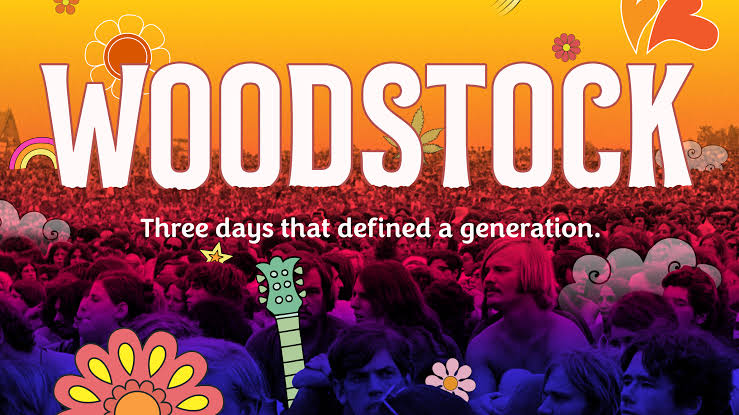The Woodstock Music and Art Fair, held from August 15 to 18, 1969, remains one of the most iconic events in American cultural history. Known simply as “Woodstock,” this music festival brought together over 400,000 people in Bethel, New York, creating a profound sense of unity and collective spirit. The event, which was meant to be a peaceful gathering that celebrated love, music, and freedom, left an indelible mark on the counterculture of the 1960s and continues to evoke happy memories for those who were there and for generations that followed.
Woodstock emerged at a time when America was rife with social and political tensions. The Vietnam War was escalating, civil rights movements were gaining momentum, and youth culture was embracing a new sense of liberation. Young people across the country were searching for ways to express themselves and reject the norms of previous generations. Against this backdrop, the idea of a large, free-spirited music festival that promoted peace and unity became an antidote to the turbulence of the times.
The festival’s organizers—Michael Lang, John Roberts, Joel Rosenman, and Artie Kornfeld—envisioned Woodstock as a utopian gathering that would bring people together to celebrate music and art. Originally planned to be held in Woodstock, New York, the location was moved to Bethel, about 60 miles away, due to logistical and zoning issues. Even so, the festival retained its name, and this small town in the Catskill Mountains would become the site of an extraordinary cultural phenomenon.
The event featured a stunning lineup of musical talent, including Jimi Hendrix, Janis Joplin, The Who, Jefferson Airplane, Crosby, Stills, Nash & Young, Sly & the Family Stone, and many more. These performances, captured in film and recordings, have become legendary, immortalizing the sound of a generation that was fighting for peace and self-expression. The music was not just entertainment; it was a form of protest, a rallying cry for social change, and an emotional release from the societal pressures of the time.
For those who attended, Woodstock was more than just a music festival—it was a powerful, transformative experience. It was an opportunity to immerse oneself in a collective consciousness where personal identities were set aside in favor of a greater sense of unity. Despite the challenges of overcrowding, muddy fields, and inadequate facilities, attendees came together to share in the joy of music and community. The event symbolized an era of idealism and hope, where people could come together to peacefully defy the establishment and create a space that embodied freedom.
The atmosphere at Woodstock was truly unique. The feeling of camaraderie and mutual respect among the festival-goers was palpable. While the logistical challenges were many—ranging from limited food and water to the lack of proper sanitation—the mood was largely one of positivity. People shared what little they had with others, and the sense of mutual aid became one of the defining features of the festival. There was a common understanding that they were all part of something greater than themselves, an event that transcended the immediate discomforts.
The music, too, was transformative. Performances by artists like Joe Cocker, Richie Havens, and Santana have gone down in history as some of the most electrifying moments of the 1960s. Hendrix’s rendition of “The Star-Spangled Banner,” played at dawn on the final day of the festival, was a hauntingly beautiful commentary on the state of America. It was a sonic representation of the disillusionment many young people felt about their country, yet it also became a symbol of resilience and the fight for a better future.
Woodstock was not without its challenges, though. The festival’s organizers had underestimated the number of people who would attend, and the infrastructure was ill-prepared for the sheer volume of people. Food ran low, and many people were forced to survive on limited supplies. Yet, the chaos did not take away from the sense of togetherness. The difficulties only seemed to enhance the feeling of solidarity, as people banded together to endure the hardships and celebrate what was ultimately a shared experience of love, peace, and music.
The legacy of Woodstock continues to inspire artists, activists, and music lovers around the world. It has become a symbol of the counterculture movement and a reminder of the power of collective action and self-expression. The event set the stage for future music festivals and solidified the idea of festivals as platforms for social and political change. Even as the world has changed over the years, the essence of Woodstock—the celebration of peace, music, and unity—remains a powerful force in contemporary culture.
For those who were fortunate enough to be there, Woodstock represents a joyful, carefree time when the world seemed full of possibility. It serves as a reminder of what people can achieve when they come together for a common cause, and it continues to evoke feelings of nostalgia and warmth for those who lived through it. In a turbulent world, Woodstock remains a beacon of hope, a reminder that there is always room for love, peace, and music to bring people together.

